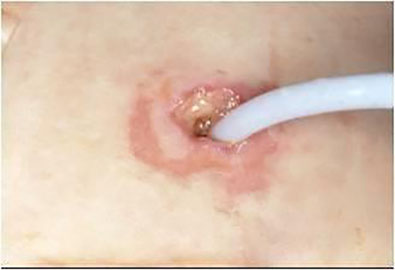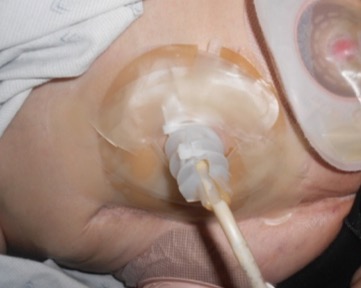A common mitigation approach to fecal contamination of perineal wounds and skin grafts is to create an ileostomy or colostomy. However, the Fistula Funnel can be paired with standard fecal management systems to isolate burns and wounds to the perineum without surgical redirection of the fecal stream.
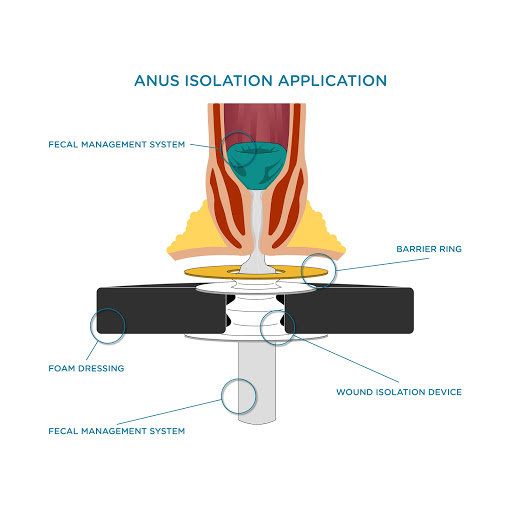
This illustration depicts how the Fistula Funnel can be employed to isolate a fecal management system. The "how-to" steps to assemble the devices follow.
Click here to see a video that demonstrates this technique.
1. Tailor the Fistula Funnel and create a skirt by cutting along the scribe line. The skirt is intended to seal and protect the perineum from fecal management system leakage.
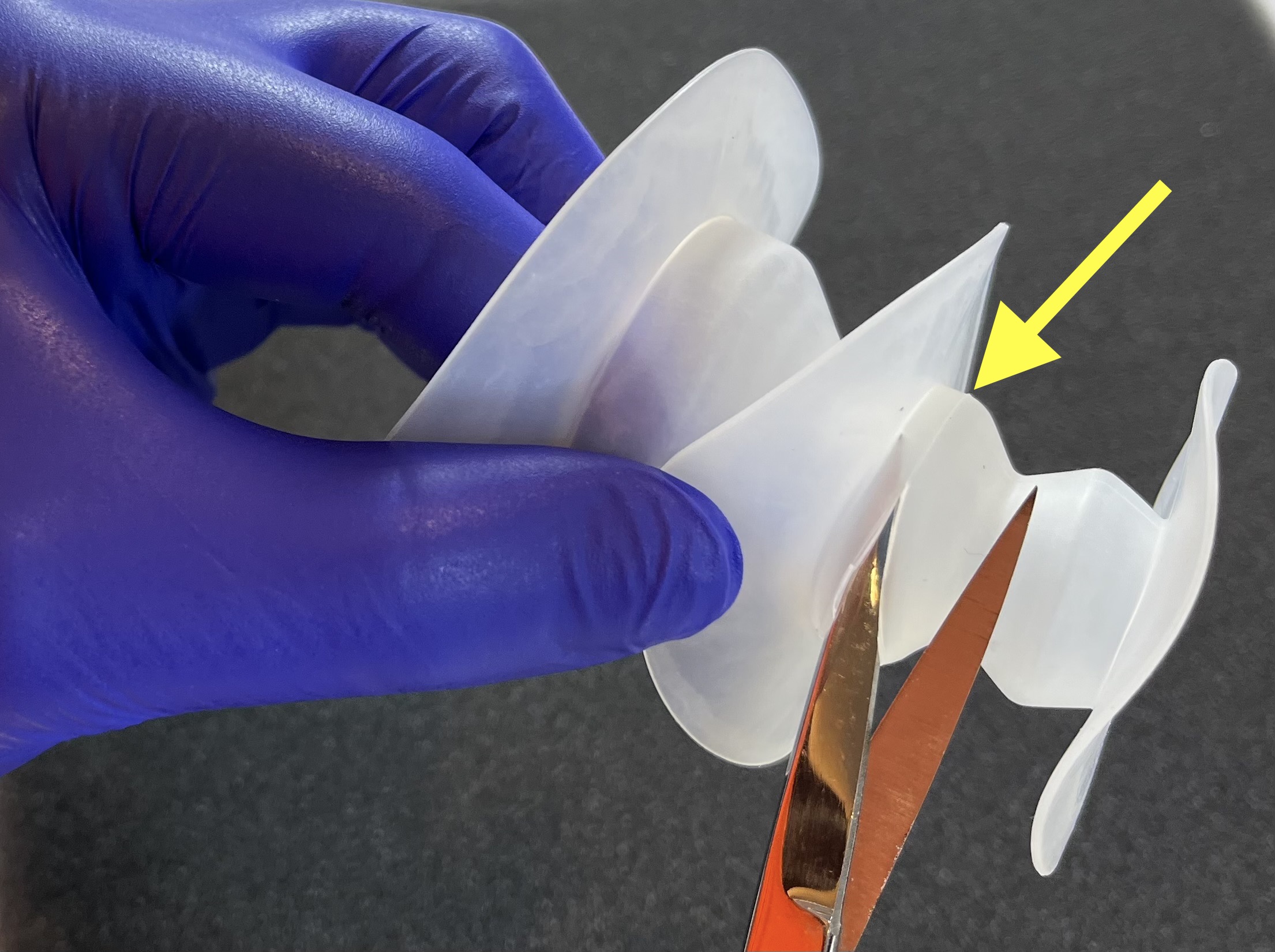
2. Disinfect the Fistula Funnel with skin or wound cleaning solution, then pull the fecal management system through the Fistula Funnel opening.
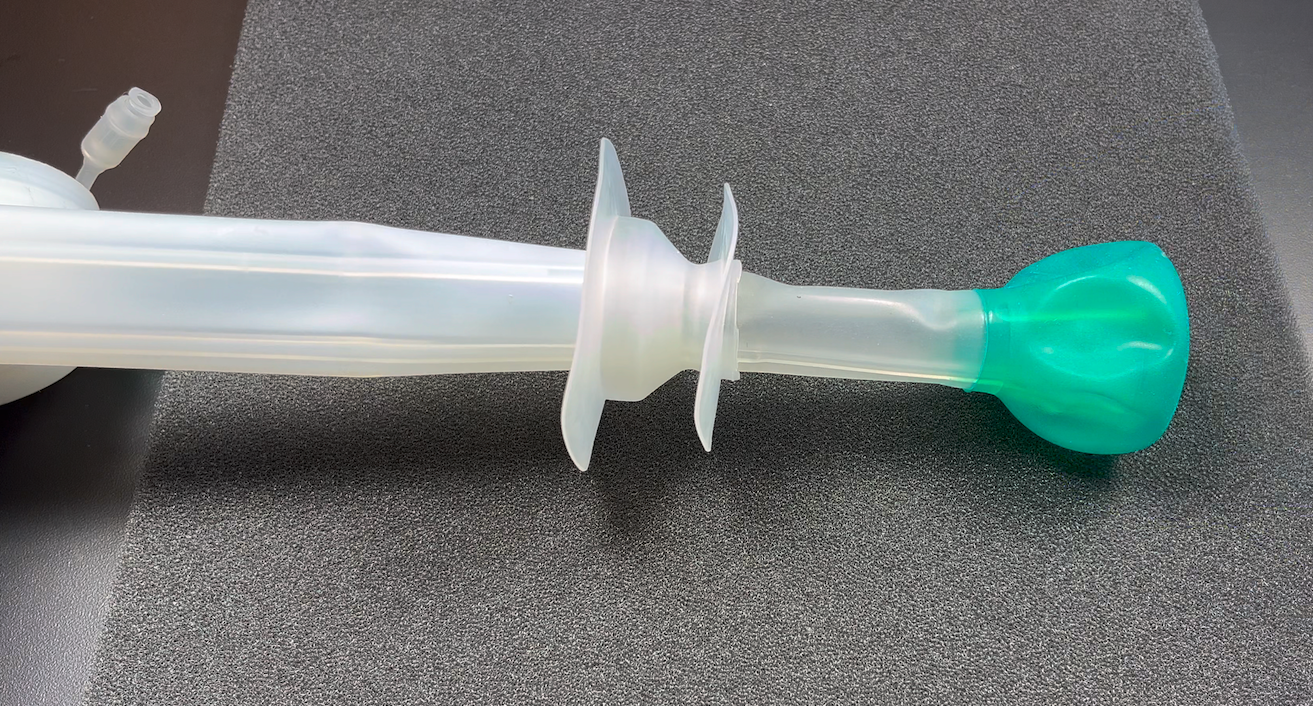
3. Apply dressings to Fistula Funnel, ensuring the skirt around the base of the Fistula Funnel opening faces toward the anus.
4. Apply an ostomy barrier ring to the base of Fistula Funnel to help form a seal between the skin and the device.
Compress the prepared Fistula Funnel against the skin around the fecal management drain to seal and protect the perineum.

